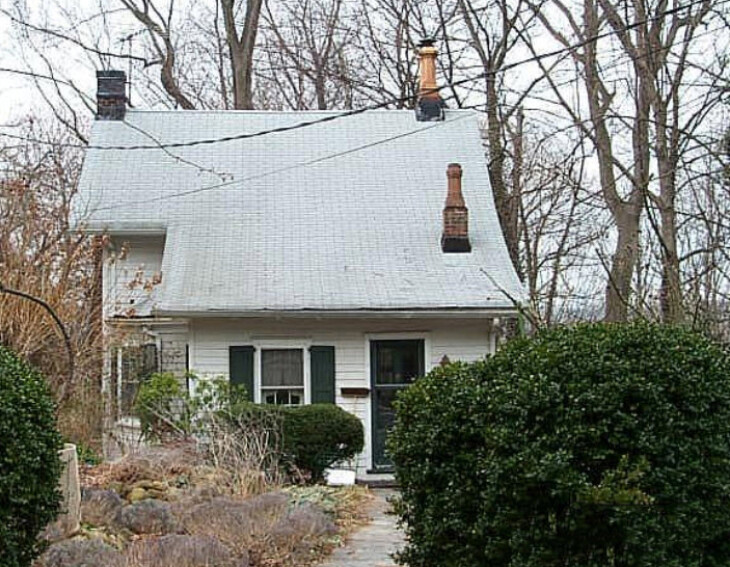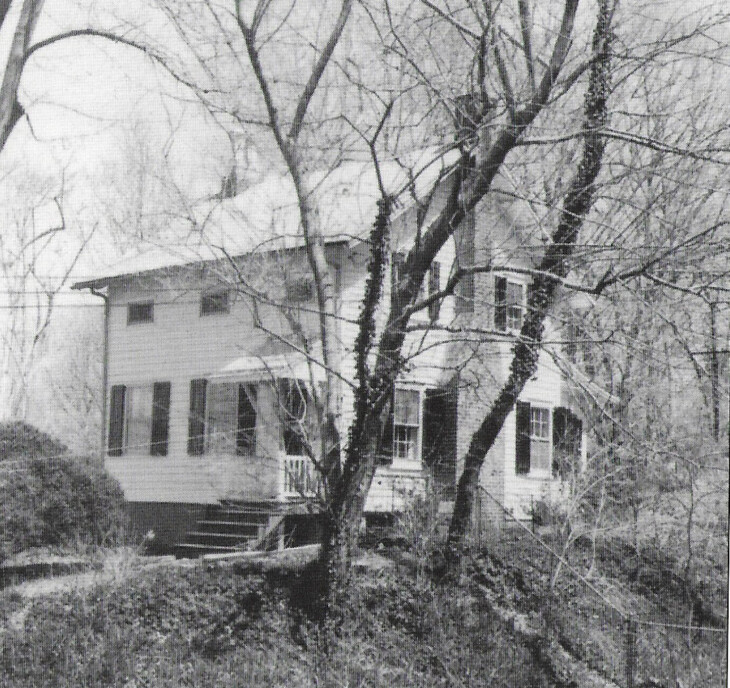Boxwood Cottage
150 Harbor Lane, Roslyn Harbor
Project Files
- National-Register-of-Historic-Places-Documentation-Form-Roslyn-Harbor-June-24-1999.pdf
- 1932-Street-Road-Property-Ownership-Map-Roslyn-Roslyn-Harbor-Glenwood-Landing-Greenvale-East-Hills-Roslyn-Heights.pdf

Adapted from the 1971 House Tour Guide
The location of Boxwood Cottage does not appear to be indicated on the Walling Map of 1859 although by that year it may have been included in the overall holding of William Cullen Bryant. In any event, the site of the "Montrose Inn", with which for many year s the cottage was associated, is not indicated on the Walling Map either, although it, too, by this time may have been part of the Bryant estate.
A map of "Montrose " a part of Roslyn Harbor, was published by Bufford's Lithography between
the years 1836-1838 . "Montrose " was a projected real estate development which never materialized and which was conceive d by Joseph W . Moulton , a retired lawyer and well-know n historian
who had been co-author of a "History of The State of Ne w York " in 1824. Mr. Moulton bought
the former Richard Kirk farmhouse (later "Cedarmere" , the home of William Cullen Bryant) together with six acres , from William Hick s in 1834. The latter had purchased 100 acres of waterfront land in 1830 for $8000.00 . Much of this was boggy and had to be drained and filled in.
Subsequently Mr. Moulton acquired more land from Mr. Hicks as in 1841 the former wrote, " Ioffer my place at Long Island for sale forty acres of land, the dwelling house is 100 feet front by 5 4 deep, 2 stories with attic. .. It is situated in Hempstead Harbour". The map of the proposed "Montrose " includes about 6 0 acres so Mr. Moulton may not have owned the entire project. The map of "Montrose", of which a few copies survive, shows proposed streets and numbered lots, some of which were to be developed on filled-in land, and the proposed sites of an academy and a steamboat wharf. The map also indicates the locations of Mr. Moulton' s house, now "Cedarmere", "Pearsall' s Mansion" , now "Willowmere " to the north of the proposed project, and several other existing buildings including a "Hotel " and two small buildings immediately to its north. An insert in the map includes " A Vie w of Hempstead Harbour (from Montrose) L.I. Sound which shows Roslyn Harbor as it appeared in 1836 and includes views of several houses which survive today.
Bufford's Lithography also produced an identical, even more rare, "View of Hempstead Harbour from Montrose , L.I." , without the map, which may have been offered for sale after the proposed "Montrose " project failed to materialize. Bufford's address, 136 Nassau Street, is indicated on the separate view of Hempstead Harbor, but not on the view which includes the map. Bufford was at 136 Nassau Street during the years 1836 through 1838.
The "Hotel " indicated on the Bufford Map was the "Montrose Inn", owned by Peter and Jacob Montrose . The Montrose Inn subsequently was acquired by Parke Godwin who married Fanny Bryant, William Cullen Bryant' s oldest daughter in 1842. Mr. Bryant purchased Joseph Moulton' s house (now Cedarmere) in 1843 and subsequently increased his holding as more land became available .
In 1869 Mr. & Mrs. Parke Godwin retained the services of Calvert Vaux , a prominent New York architect, to enlarge and modernize the former Montrose Inn, a 2-1/ 2 storey, gable -ended, center hall house in the late Federal style. Calvert Vaux drawings for this alteration still survive. The place was re-named "Clovercroft" and ultimately descended to Conrad Goddard, the Roslyn Harbor historian who sold it in 1955. By that time the estate had increased to 84 acres.
A conversation with Mr. Goddard (19th March 1970) established that "Boxwood Cottage" always had been an accessory building of the Montrose Inn, but that it had been moved a short distance to the north in 1869 when Calvert Vaux enlarged the Montrose Inn for Parke Godwin . Mr. Goddard pointed out that a small wing had been added to the rear of the cottage at the time of its relocation and that traces of the cottage' s original foundation had survived at least until 1955.
It may be assumed that the planting of large boxwood, from which the cottage takes its name, was set out at about the time of the relocation of the cottage.

0 Comments